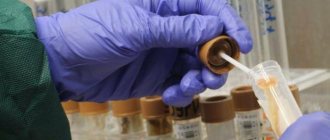A little about the features of Helicobacter
The literal Latin-Greek name Helicobacter pylori (“spiral pyloric”) is associated with the characteristic shape of the bacterium and its maximum residence in the zone of transition from the stomach to the duodenum (pylorus).
With the help of flagella, mobility and the ability to move in the gel-like mucus environment on the inner surface of the stomach are ensured. This is the only microorganism that can live in an acidic environment.
From its discovery in 1875 to the awarding of the Nobel Prize in 2005, 130 years passed. Many scientists have invested their knowledge and experience in studying the unusual infection. She did not grow on nutrient media. In order to confirm his research, Barry Marshall, a professor of the Department of Clinical Microbiology from Western University of Australia, conducted an experiment on himself: he drank the contents of a cup containing bacteria. Then, 10 days later, endoscopy showed a connection between the emerging signs of stomach inflammation and the presence of Helicobacter.
Marshall and his colleague Warren did not stop there. They were able to prove the cure of gastritis with a course of Metronidazole and a bismuth preparation, and showed the role of antibiotics in the treatment of gastritis, gastric and duodenal ulcers.
Modern research has clarified the conditions for the existence of the microorganism. Helicobacter pylori uses the energy of hydrogen molecules released by intestinal bacteria. Synthesizes enzymes:
The important point is that it is in the stomach of a person without signs of disease. But if the protective forces fall, it behaves very aggressively, causing inflammation to ulcers and cancerous degeneration. That is why timely detection of traces of Helicobacter pylori in a blood test is so important for human health.
General information
Antibodies to Helicobacter pylori IgG in the blood (Helicobacter) are an indicator of a person’s infection with the causative agent of Helicobacter pylori (bacterium - Helicobacter pylori).
This pathogen can lead to various lesions of the gastrointestinal tract and the development of peptic ulcers. Main indications for use: diagnosis of gastritis, peptic ulcer, esophagitis and other diseases of the digestive tract. In 1983, the Australian doctor B. Marshall discovered that previously identified spiral-shaped gram-negative bacteria from the gastric mucosa (which were not given importance in the etiology of the disease) were present in the majority of patients suffering from gastric ulcer. Further research showed that such a pathogen is the bacterium H. pylori. The bacterium itself is not believed to cause ulcers. It leads to stimulation of the formation of hydrochloric acid and disrupts the protection against the effects of acid on the gastric mucosa, leading to the development of an inflammatory process.
Diagnostic techniques based on the enzyme immunoassay method make it possible to quantitatively determine with high sensitivity the presence of IgG antibodies to Helicobacter pylori in the blood. Antibodies of this class are detected starting 3-4 weeks after infection. A decrease in antibody titer during treatment indicates the effectiveness of the therapy.
Although Helicobacter pylori can be detected by culture of biopsy material taken during endoscopy, an enzyme-linked immunosorbent assay test is preferable as a non-invasive test.
Antibodies of the IgA class can be detected several weeks after infection and can be detected subsequently for a long time, up to several years. It is possible that they indicate a chronic infection. Their disappearance after treatment may be an indicator of successful eradication. The IgA response may indicate greater local inflammation and correlates with gastritis activity. Rarely, infected people may only have an IgA response. IgM antibodies are rarely detected and their presence may indicate early Helicobacter pylori infection.
The comprehensive diagnosis of helicobacteriosis, along with the enzyme immunoassay method (detection of antibodies), includes histological examination and the PCR method.
Identification of the pathogen in one of the last 2 methods is confirmation of infection and an indication for therapy to eradicate the pathogen. It is currently known that peptic ulcer disease can develop in only approximately 15% of cases when infected with this bacterium. This fact can be explained by the fact that only certain strains of Helicobacter pylori lead to the development of the disease. It has been shown that the bacterium has intraspecific diversity, which determines its pathogenicity (see “Detection of Helicobacter by PCR”). In this case, it is necessary to take into account other factors contributing to the development of peptic ulcer.
Who should have their blood tested for Helicobacter?
The introduction of Helicobacter into the stomach wall may be accompanied by atypical, but noteworthy, symptoms:
- pain - the intensity ranges from mild to strong, occurs during or after eating, “hungry” pain is possible, often a person describes his sensations when a bolus of food passes through the esophagus;
- heartburn - associated with the reflux of gastric juice into the lower parts of the esophagus, frequent repetitions are caused by increased acidity and damage to regulatory processes;
- a feeling of heaviness in the epigastric area - manifests itself after even a light meal;
- nausea - without signs of pregnancy toxicosis or any pathology;
- sometimes vomiting and acute pain in the stomach, similar to food poisoning;
- the presence of mucus and blood in the stool;
- constant belching;
- bloating (flatulence);
- violation of bowel movements (constipation or tendency to diarrhea);
- unknown weight loss.
If the listed symptoms are constantly associated with risk factors such as:
- constant discomfort or overeating, drinking alcohol, hunger;
- hereditary disadvantage in the family.
A person should undergo a full examination to exclude:
- peptic ulcer;
- cancer of the stomach or esophagus;
- esophagitis (inflammation of the esophagus);
- identifying differences with dyspepsia of other etiologies;
- gastritis and duodenitis;
- infection of close relatives with Helicobacter;
- relationship to the risk group.
Repeated blood tests are recommended to assess the patient’s condition during treatment.
Indications for testing
It is difficult to imagine that a person who does not have symptoms of the disease would go for a full-scale examination unnecessarily.
Symptoms predisposing to testing for Helicobacter pylori:
- Gastralgia (pain in the stomach and intestines) of varying intensity. Appear during or after meals, caused by enzyme deficiency and impaired digestion of food and its stagnation in the stomach.
- "Hunger pains." They appear 2-3 hours after eating and disappear during meals. Due to damage to the mucous membrane, its sensitivity worsens, the patient feels how food and water pass through the digestive tract.
- Intense heartburn. It occurs due to the backflow of aggressive gastric juice into the esophagus that is not intended for this, and with frequent repetitions it is a symptom of pathology.
- A feeling of heaviness that occurs even after taking minimal portions of food. The patient has a feeling of a full stomach.
- Frequent nausea not caused by objective reasons (for example, toxicosis of pregnancy).
- A combination of stomach pain with vomiting and inability to eat and drink.
- Slight discomfort in the projection of the stomach, loss of appetite, mild heaviness. Often appear at the initial stage of heliobacteriosis.
- The presence of mucus in the stool.
Any of these symptoms is a reason to immediately consult a doctor for examination and treatment.
Features of infection in children
Morbidity statistics show that 35% of preschool children and 75% of schoolchildren are infected with helicobacteriosis in Russia. Small children get the infection from mothers licking nipples, spoons when feeding, from saliva during kissing, and sharing utensils.
Detection of antibodies in the blood allows a timely course of therapy to cure the child. But at the same time, you should look for bacteria carriers among adult family members. Since it has been established that 3 years after the course of treatment, 35% of children experience re-infection. After a period of 7 years, the number of infected reaches 90%.
The most common clinical picture of the lesion develops in a child:
- from nausea;
- refusal to eat;
- dyspepsia (excessive regurgitation, bloating);
- unclear pain.
How can Helicobacter be detected by blood?
The body of any person reacts to an infectious pathogen by developing a protective reaction. The level of antibodies in the blood increases. They are formed by specific protein complexes and cells. The diagnostic level allows you to identify:
- the presence of antibodies and quantify them;
- the structure of proteins (immunoglobulins) that are involved in the antigen-antibody reaction;
- DNA of cells involved in inflammation.
Accordingly, the methods used are called:
- enzyme immunoassay (ELISA);
- analysis for antibodies and their protein components (immunoglobulins);
- polymerase chain reaction (PCR) method.
How is enzyme immunoassay performed?
Helicobacter ELISA consists of detecting a certain concentration of antibodies in the blood serum. The indicator is estimated by their dilution or titer. The presence of a positive reaction indicates that a reaction is occurring in the body with a foreign antigen in the form of Helicobacter. The severity and magnitude of the indicator determine the strength of the immune response.
Positive aspects of the method:
- the possibility of conducting research at the laboratory level in the clinic;
- detection of bacteria in the early stages of infection;
- no need for fibrogastroscopy to confirm the etiology of the disease.
- there remains the possibility of a false negative result in infected patients if the immunity is not strong enough;
- a false-positive effect can be obtained in patients who have already been treated, but retain antibodies to Helicobacter pylori;
- the bacterium itself cannot be isolated;
- low antibody titers are detected during treatment with cytostatics;
- the results of a blood test for antibodies to Helicobacter pylori are difficult to evaluate if the patient is treated with antibiotics, even for reasons that are not related to gastric pathology.
INTERPRETATION OF RESULTS:
| Parameter | Reference values | Units |
| Anti-H. pylori IgG (quantitative determination of IgG antibodies to Helicobacter pylori) |
| AE/ml |
| Not detected | Discovered |
|
|
We draw your attention to the fact that the interpretation of research results, diagnosis, as well as the prescription of treatment, in accordance with Federal Law No. 323-FZ “On the fundamentals of protecting the health of citizens in the Russian Federation” dated November 21, 2011, must be carried out by a doctor of the appropriate specialization.
" ["serv_cost"]=> string(3) "575" ["cito_price"]=> NULL ["parent"]=> string(2) "25" [10]=> string(1) "1" [ "limit"]=> NULL ["bmats"]=> array(1) { [0]=> array(3) { ["cito"]=> string(1) "N" ["own_bmat"]=> string(2) "12" ["name"]=> string(31) "Blood (serum)" } } ["within"]=> array(2) { [0]=> array(5) { [" url"]=> string(15) "zdorovaja-kozha" ["name"]=> string(25) "Healthy skin" ["serv_cost"]=> string(4) "5025" ["opisanie"]=> string(6366) "
The program is designed to identify the main causes of imperfect skin. It is extremely important to identify the presence of hidden infections and assess the condition of internal organs, the disruption of which can cause skin diseases. Many aspects of the condition of the skin are associated with disturbances in the level of sex hormones, in particular, a lack of estrogen production and increased production of androgens. Acne, oily seborrhea, androgenic acne are symptoms of hyperandrogenism.
Determination of the hormone androstenediol glucuronide
recommended for assessing androgenic activity of the skin.
TSH
– a lack of thyroid hormones can manifest itself on the skin in the form of dryness, pallor, and the appearance of a yellowish tint.
Iron deficiency
in addition to chronic fatigue, weakness, headache (due to anemia and tissue hypoxia), it manifests itself in the form of pale skin and dermatitis.
H. pylori bacterium
in addition to diseases of the gastrointestinal tract (gastritis, ulcers), it is involved in various skin diseases. Several studies have shown a link between H. pylori infection and chronic urticaria: the infection increases the permeability of the gastric mucosa and thus increases exposure to allergens in the gastrointestinal tract. In addition, the immune response to H. pylori produces antibodies that can release histamine in the skin. Also, H. pylori can promote an increase in nitric oxide, causing redness of the skin, can be one of the inflammatory factors in psoriasis, cause an autoimmune reaction in Sjögren's syndrome, and can contribute to the development of atopic dermatitis, brittle nails and hair.
Helminths Ascaris
and
Toxocara
are factors contributing to the development of various skin diseases (urticaria, atopic dermatitis, etc.). The determination of anti-Ascaris and anti-Toxocara antibodies in blood serum is prescribed in the Federal Clinical Guidelines for the management of patients with various skin diseases (2015).
Decreased Ca2+
for a long time, can manifest itself, including in the form of dry scaly skin, brittle nails and disruption of the hair structure.
Magnesium
participates in maintaining the balance of body fluids, the exchange of phosphorus and carbohydrates, and is part of a huge number of enzymes. Premature skin aging associated with problems with collagen metabolism is often caused by a lack of magnesium. Magnesium deficiency is also one of the causes of hair loss and brittle nails.
Zinc
is actively used in cosmetics and as “vitamins for the skin”, because improves complexion, influencing skin regeneration processes, prevents the formation of free radicals (aggressive forms of oxygen, oxidants) and regulates hormonal balance, preventing the appearance of acne and blackheads. In addition, zinc is involved in maintaining collagen fibers, which give the skin elasticity and prevent the formation of wrinkles.
Indications for the purpose of the study:
- unhealthy skin condition: redness, acne, dryness; ineffective treatment of these skin conditions.
We draw your attention to the fact that the interpretation of research results, diagnosis, as well as the prescription of treatment, in accordance with Federal Law No. 323-FZ “On the fundamentals of protecting the health of citizens in the Russian Federation” dated November 21, 2011, must be carried out by a doctor of the appropriate specialization.
" ["catalog_code"]=> string(6) "300140" } [1]=> array(5) { ["url"]=> string(30) "zdorovyje-kozha-volosy-i-nogti" [" name"]=> string(53) "Healthy skin, hair and nails" ["serv_cost"]=> string(4) "7750" ["opisanie"]=> string(0) "" ["catalog_code"]= > string(6) "300141" } } }
Method for studying specific immunoglobulins
Immunoglobulins (Ig) are special proteins that take an active part in the fight against the infecting antigen.
But they are not produced immediately. In the diagnosis of Helicobacter infection, importance is attached to three types of immunoglobulins, designated: A, M, G. Each plays a role in the inflammatory process:
- IgG - is considered a marker that confirms the presence of bacteria in the body; it can be detected already in the third or fourth week after the introduction of the pathogen; it is important that high IgG titer numbers remain in a person for several months after recovery and death of Helicobacter;
- IgM is an indicator of early infection, it is rarely detected, the patient does not yet have any symptoms of the inflammatory process, so detection can establish infection in the family;
- IgA - indicates an early stage of infection or a pronounced inflammatory process; it can be detected in the saliva and gastric juice of an infected person, which indicates the high activity and infectiousness of the pathogen.
The positive side of the method can be considered:
- high efficiency of laboratory testing, IgG is detected in 95-100% of patients, IgA - in 67-82% of cases, IgM - 18-20%;
- Using a blood test, by comparing immunoglobulin titers with previous indicators, you can monitor deviations from the norm, the development of the pathological process, and the effectiveness of treatment;
- the test is more likely than antibodies in the blood to prove infection.
- a month must pass before the main marker (IgG) appears, this plays into the hands of a delay in diagnosis;
- after treatment, especially in elderly patients, the titer remains high for a long time (IgG is detected in half of the patients for a year and a half);
- there is no way to recognize the acute form of the disease from the passive entry of bacteria into the stomach.
Diagnostic capabilities of the PCR method
Using polymerase chain reaction, bacterial DNA, the basis of the microorganism's gene composition, can be detected in the patient's blood. Therefore, this method is considered the most reliable. The result is assessed as positive (the bacterium is in the body) or negative (the patient does not have the bacterium). While confirming the presence of Helicobacter, the method does not provide information about its pathogenicity. It is known that the pathogen does not cause illness in many people.
In addition, when taking the test, you need to take into account that no treatment should be carried out (not just antibiotics). This is hardly achievable, since all patients take some kind of medication to relieve discomfort or pain. The analysis is carried out in specialized centers, so its availability is low.
Preparation for testing and duration of the study
Your doctor will tell you in detail how to take the test. Preparation includes:
- exclusion from the diet the day before blood donation of fatty foods;
- a categorical ban on alcohol;
- medication should be stopped 2 weeks in advance;
- minimizing physical activity;
- On the morning of the test, you are not allowed to have breakfast, you can only drink water (at least eight hours must have passed since your last meal).
Plasma is obtained from venous blood taken by sedimentation of red blood cells and other elements. Using a micropipette, it is introduced into the wells of a special plate with an antigen standard applied to them. Between substances, in the presence of antibodies in the serum, a reaction occurs and complex compounds are formed, which are visualized by adding a coloring compound.
For a more accurate assessment of the result, photometry is carried out using a spectrophotometer. It compares the material under study with control samples. Mathematical processing allows you to obtain quantitative indicators. The laboratory test for immunoglobulin G takes 24 hours to prepare, and the patient will receive the result the next day. A week is needed to study other globulins.
Basic rules for preparing for research
In order for the test results to be accurate and to be able to donate blood correctly, a number of rules should be followed before manipulation:
- Give up smoking and alcohol one day before.
- Eliminate food intake; fasting should last 8-10 hours.
- A few days before the procedure, you should remove fatty and smoked foods.
- Stop taking medications 14 days in advance. If this is not possible during preparation, the laboratory assistant should be notified.
- Reduce physical activity the day before and on the day of the examination.
Decoding the results
Only a specialist can correctly decipher the results of the analysis. Doctors usually do not focus on the normal values of Helicobacter pylori and abnormalities. A positive or negative answer is considered sufficient. But the degree of increase compared to the norm still indicates the activity of bacterial growth in the body.
Sometimes a conclusion is given about a questionable analysis, then it should be repeated after 2 weeks. Each laboratory determines its own values (reference) for the norm; they are included in the conclusion form.
Immunoglobulin titers are assessed in different systems. In units per ml of plasma (u/ml), 0.9 is taken as the norm. Accordingly, normal for immunoglobulins:
- A and G are considered to be values less than 0.9;
- M - less than 30.
- less than 0.9 is considered a negative result;
- 0.9–1.1 – doubtful;
- more than 1.1 - positive.
In the units/ml option:
- negative result - less than 12.5;
- doubtful 12.5–20;
- positive - more than 20.
A negative result for M and G immunoglobulins indicates the absence of infection with Helicobacter; with a negative result for type A, such a conclusion cannot be made, since an early stage of infection is possible.
Elevated levels can be assessed for immunoglobulins:
- G - presence of bacteria in the body or the patient has been ill and is in the recovery period;
- M - infection occurred recently;
- A - the height of the inflammatory process with high activity.
2 weeks after the end of treatment, the immunoglobulin G titer decreases by half. If it decreases by 2% over 6 months, then we can hope for the complete destruction of Helicobacter. The correlation between the results of suppression of the pathogenic pathogen and the picture of fibrogastroscopy shows a clear connection with a reduced inflammatory process in the gastric cavity.
Another result: a dynamic study shows no decrease in titers. This effect does not mean incorrect treatment; it is more like an overly active process.
Treatment of Helicobacter pylori without antibiotics
Methods aimed at the complete destruction of Helicobacter pylori are called eradication. In 1987, a European group was formed whose goal is to develop the most effective, affordable and safe eradication methods. Their recommendations, formalized in the form of works, are called the Maastricht Consensus.
The main method of treatment is antibiotics. However, it is not always possible to achieve positive dynamics due to the high level of resistance of Helicobacter pylori to most known antibiotics. In addition, in certain areas of the gastrointestinal tract, pathogenic bacteria are inaccessible to antibacterial substances due to the large amount of mucus.
Independent use of alternative medicine methods does not allow achieving complete destruction of the infection. However, the technique can be used as an adjunct to drug treatment.
Treatment with flax seed, the tincture of which is taken before eating, helps reduce acidity. The consistency of the decoction in the form of mucus helps to further protect the stomach from the destructive effects of enzymes and bacterial toxins.
Treatment with potato juice involves drinking it daily before meals. It has been noted that potato juice, like other vegetables, helps relieve pain and reduce inflammation.
It is acceptable to use tinctures from various herbs, for example, St. John's wort, chamomile and yarrow. Herbs are mixed in equal quantities, poured with boiling water and infused. Before meals, you should take no more than 2 tablespoons of tincture.
Treatment with calamus root helps increase acidity levels. The tincture is taken before meals, 50-70 ml up to three times.
Reviews on the treatment of Helicobacter pylori with folk remedies are different. Many people attribute their recovery exclusively to tinctures and decoctions, with the complete exclusion of antibiotics. However, we should not forget about the known cases of spontaneous elimination of bacteria from the human body. Despite the lack of evidence for the phenomenon, its exclusion is impossible.
The maximum therapeutic effect is achieved with strict adherence to the diet, the use of antibiotics and methods of informal medicine. Treatment is considered successful if the clinical symptoms become less pronounced or disappear completely.
Decoding the test result for Helicobacter pylori
A transcript is a conclusion issued by a doctor after an examination, the result of the manipulations performed.
If the doctor says that the tests for Helicobacter pylori infection are negative, this means that no bacteria were found in the body. The patient is healthy. Conversely, a positive result indicates infection.
Each research method has its own specific norms and limits by which the presence or absence of a pathogenic microorganism is assessed; some tests can reveal the degree of infection and the stage of activity of the bacterium.
How to understand the medical reports of the examination? Let's decipher the results of each diagnostic method for H. pylori.
Is Helicobacter pylori dangerous for the body?
In order to identify diseases caused by this bacterium, it is very important to do a blood test for Helicobacter in time. Symptoms for which it is recommended to donate blood for testing:
- regular heartburn;
- feeling of heaviness in the stomach;
- pain, including those that go away after eating;
- meat intolerance, leading to vomiting.
The doctor may also order tests if there is a suspicion of the following diseases:
- inflammatory diseases of the digestive system;
- peptic ulcer;
- cancer;
- gastritis.
Test norm for Helicobacter pylori
This bacterium should not exist in the body of both adults and children. Therefore, the norm for any test for this microbe is a negative result:
- The absence of the bacterium itself when examining smears of the gastric mucosa under a microscope. The eye of a diagnostician under multiple magnification does not reveal S-shaped microbes with flagella at the end of the body.
- The indicator in the test system will not turn crimson when conducting a urease test. After the mucosal biopsy is placed in the express kit environment, nothing will happen: the color of the indicator will remain the original (light yellow or another as stated by the manufacturer). This is the norm. In the absence of bacteria, there is no one to decompose the urea, turning it into ammonia and carbon dioxide. The environment to which the indicator is sensitive does not become alkalized.
- Less than 1% of the labeled 13C isotope in exhaled air is detected in a breath test. This means that Helicobacter enzymes do not work and do not break down the urea drunk for the study. And if enzymes are not detected, we can conclude that the microorganism itself is absent.
- There is no growth of colonies on nutrient media when carrying out the bacteriological method. An important component of the success of this analysis is compliance with all modes of growing the microbe: oxygen in the environment should be no more than 5%, a special blood substrate is used, and an optimal temperature is maintained. If small round bacterial colonies do not appear on the medium over the course of five days, we can conclude that there was no microbe in the biopsy sample under study.
- The absence of antibodies to the pathogen during an enzyme immunoassay of blood or their low titer of 1:5 or less. If the titer is elevated, Helicobacter is present in the stomach. Antibodies or immunoglobulins (IgG, IgM, IgA) are specific proteins of the immune system produced to protect against microbes and increase the body's resistance.










